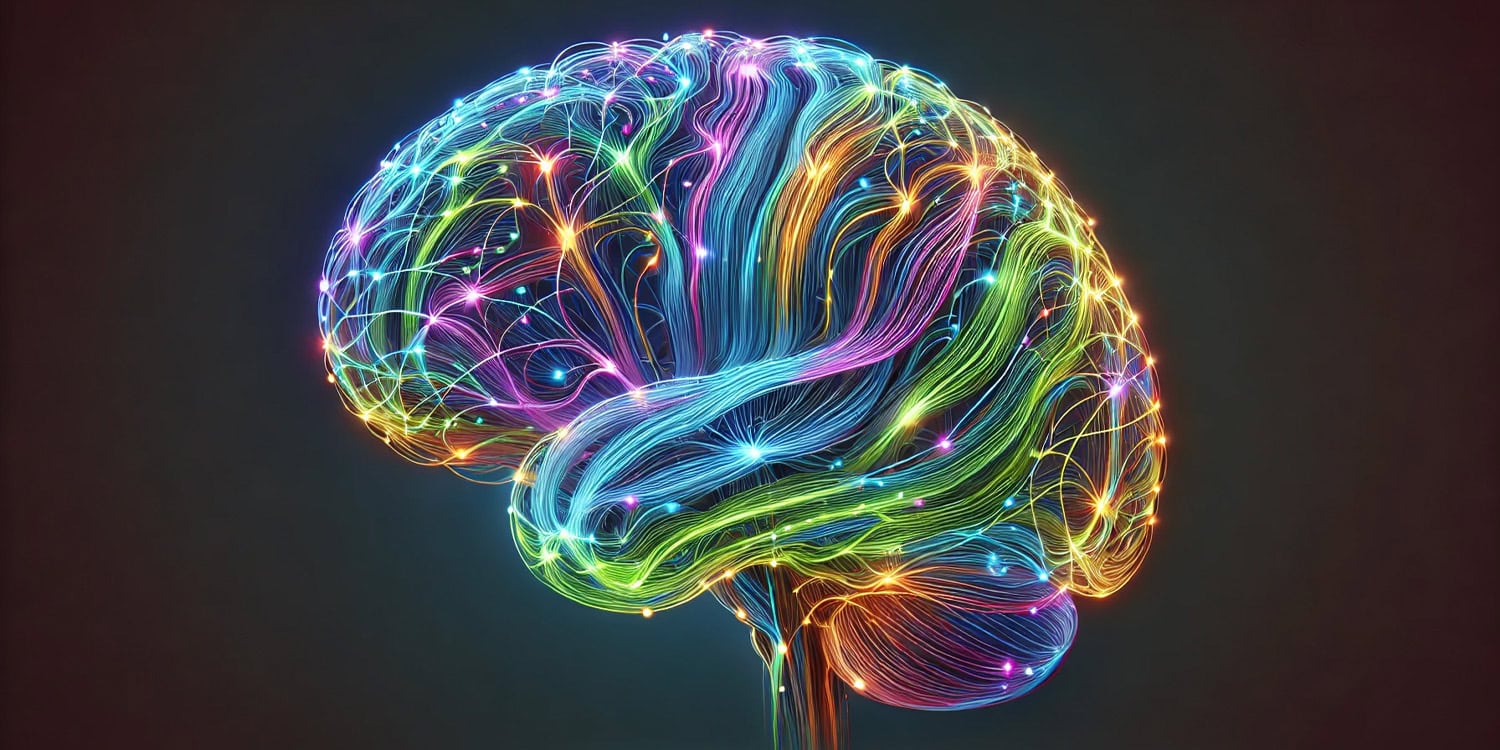A new study published in PLOS Biology provides fascinating insights into how our daily experiences and behaviors, such as sleep patterns, physical activity, and even our mood, leave lasting imprints on our brain’s connectivity. Conducted by researchers at Aalto University and the University of Oulu, the study used brain scans and data from wearable devices to track the brain activity and physiological states of a single participant over 133 days.
The new findings challenge the common perception that brain connectivity is influenced only by immediate events, revealing instead that behaviors from up to 15 days prior can continue to shape the brain’s functional connections. This suggests that short-term fluctuations in our environment and physiological states play a much more sustained role in brain dynamics than previously thought.
The researchers were motivated by the idea that human brains do not function in isolation. Ana Triana, the lead researcher, explained that our behavior and mental states are constantly influenced by a wide range of factors, including our environment, physical health, and emotional experiences. However, much of what is currently known about brain connectivity comes from short-term studies or cross-sectional research, which capture only snapshots of brain activity at a single point in time. These designs, while informative, might miss the more extended and complex effects that daily life has on brain function.
Triana and her team wanted to investigate whether behaviors, moods, and physiological changes like heart rate variability or sleep patterns continue to influence brain activity over a more extended period. This approach could provide a more accurate understanding of how our mental and physical states are intertwined with brain connectivity over days and weeks, rather than just minutes or hours.
“We wanted to go beyond isolated events,” Triana said. “Our behavior and mental states are constantly shaped by our environment and experiences. Yet, we know little about the response of brain functional connectivity to environmental, physiological, and behavioral changes on different timescales, from days to months.”
The study took a unique approach by focusing on just one participant—Ana Triana herself. Over a period of 133 days, Triana’s daily activities, sleep patterns, heart rate, and mood were continuously monitored using wearable devices, including a smartwatch and a ring designed to track physiological data.
“The use of wearable technology was crucial,” Triana explained. “Brain scans are useful tools, but a snapshot of someone lying still for half an hour can only show so much. Our brains do not work in isolation.”
Additionally, she completed surveys about her mood and experiences twice a day. This data was complemented by functional magnetic resonance imaging (fMRI) scans conducted twice a week, which measured her brain’s connectivity in different contexts, including rest, attention tasks, and memory tasks.
Each fMRI scan provided a detailed picture of how different regions of Triana’s brain communicated with each other while she performed tasks or simply rested. By combining the fMRI data with the physiological and behavioral data collected through wearables and surveys, the researchers could explore how changes in behavior and physical health impacted brain connectivity over time.
One of the key metrics the study focused on was heart rate variability (HRV), which is an indicator of how adaptable the heart is to changes in the body’s physiological state, such as during stress or relaxation. By analyzing this in conjunction with brain scans, the researchers could explore the relationship between physiological health and brain connectivity in real-world conditions.
The study found strong evidence that the brain’s connectivity evolves in response to external and internal factors over time, and not just in the immediate aftermath of a given event. For instance, a restless night of sleep or an intense workout from several days ago could still be shaping the way different parts of the brain communicate with each other up to 15 days later.
The research identified two distinct patterns in brain connectivity: a short-term wave lasting about seven days, which likely reflects rapid adaptations to more immediate factors like sleep quality, and a longer-term wave of changes that extends to around 15 days, showing more gradual, lasting effects.
One of the study’s more surprising findings was the link between HRV and brain connectivity, particularly during periods of rest. Higher heart rate variability, which typically indicates a better capacity to handle stress, was associated with more efficient communication between brain regions, especially in areas related to attention and memory. This suggests that the body’s ability to manage stress may have a lasting effect on the brain’s functional architecture, even when the brain is not actively focused on a specific task.
Physical activity also played an important role in shaping brain connectivity. Higher levels of daily movement were associated with stronger connections between brain regions, which could imply that regular exercise supports the brain’s ability to stay flexible and adapt to new challenges. On the flip side, days with less physical activity were linked to weaker brain connectivity, particularly in areas responsible for attention and cognitive flexibility.
Interestingly, the researchers found that these effects were not limited to the immediate aftermath of a specific behavior. For example, shifts in mood, sleep quality, or physical activity left lasting imprints on brain connectivity that persisted for days or even weeks. The brain appears to retain a “memory” of these behaviors, allowing them to influence brain function well beyond the moment they occurred.
Limitations and Directions for Future Research
While the study’s findings are exciting, they come with important limitations. One major limitation is the fact that the study was conducted with only a single participant, which makes it difficult to generalize the findings to the broader population. While this single-case design allowed the researchers to gather incredibly detailed data over a long period, it’s unclear whether the same patterns would be observed in other people. The specific lifestyle, physiological makeup, and emotional responses of the participant might differ significantly from those of others, leading to different results.
Future studies could benefit from a larger sample size to see if these brain-behavior relationships hold across different individuals with varied lifestyles and health conditions. Additionally, while the study focused on the effects of behavior and physiological states on brain connectivity, it did not explore whether changes in brain connectivity could, in turn, influence future behavior or physiological responses. Investigating this bidirectional relationship could offer a more comprehensive understanding of how the brain and body interact over time.
Another direction for future research could be the use of more complex statistical models to explore how different factors, such as sleep, mood, and physical activity, interact with each other to influence brain connectivity. The current study looked at these variables in isolation, but in reality, they are likely to have complex, interdependent effects on the brain’s functional networks.
Finally, the researchers pointed out that while they tracked changes over a 15-day period, it is unknown whether behaviors from even further back in time might have an impact on brain connectivity. Future studies could extend the observation period to explore whether certain behaviors or physiological states have even longer-lasting effects on brain function.
“We must bring data from daily life into the lab to see the full picture of how our habits shape the brain, but surveys can be tiring and inaccurate,” said study co-author, neuroscientist and physician Nick Hayward. “Combining concurrent physiology with repeated brain scans in one person is crucial. Our approach gives context to neuroscience and delivers very fine detail to our understanding of the brain.”
“Linking brain activity with physiological and environmental data could revolutionize personalized healthcare, opening doors for earlier interventions and better outcomes,” added Triana.
The study, “Longitudinal single-subject neuroimaging study reveals effects of daily environmental, physiological, and lifestyle factors on functional brain connectivity,” was authored by Ana María Triana, Juha Salmi, Nicholas Mark Edward Alexander Hayward, Jari Saramäki, and Enrico Glerean.




